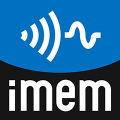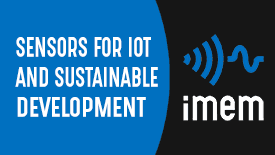The integration of renewable energies into our daily life and the optimization of the energy consumption are key factors for sustainable development and the mitigation of climate change. In particular, the integration of renewable energy becomes strategic in the field of sensor systems for smart cities.
In the smart city of the future, the greatest need is to create a continuous communication between objects, infrastructures and citizens. To achieve this, the best solutions are the Internet of Things (IoT) applications. The internet of things, with its omnipresent connectivity and the ability to collect, transmit and process large quantities of data from diffused sensor systems with low electricity consumption, allows to make decisions for improving many aspects related to cities, such as air quality, vehicle traffic, lighting, maintenance, etc.
In recent years, the technologies of outdoor IoT are requiring mobile solutions, which can be easily moved and continuously adapted to the urban area, independent of the infrastructure where they are temporarily installed, i.e. portable weather stations, sensors for monitoring the health of urban greenery or mobile connectivity systems with 5G technology. In these systems, energy self-sufficiency becomes an essential prerogative for their functioning and also becomes basic for those distributed IoT systems that are installed on infrastructures that do not have easy access to the electricity network, as bike sharing spots or CCTV systems. In all these cases the "green" technologies for energy generation are optimal for powering IoT systems in "stand alone" mode.
The research of the AdR in the energy field is based on finding specific solutions to power the sensor systems developed at IMEM. Among these solutions, the greenest and more compatible with outdoor IoT systems is based on photovoltaic (PV) technology.
For more than 12 years, the IMEM Institute has been studying and developing flexible photovoltaics for integration on buildings (BIPV) and products (PIPV), using both crystalline silicon and thin film cells.
The photovoltaic conversion efficiencies achieved by the latest generation flexible cells (> 22%) allow to generate a few Watts of electricity over an area of only 100 cm2, which are compatible with the power consumption of many IoT systems.
Through proprietary processes for encapsulation, very light and foldable PV mini-modules (5 grams for each Watt produced) can be manufactured with customizable dimensions in order to be physically integrated with the IoT system and with the electrical outputs for supplying the sensor system (power, voltage or current). By interfacing the modules with adequate storage systems (thin film lithium batteries and ultracapacitors), fully h24 self-sufficient IoT systems can be obtained.








